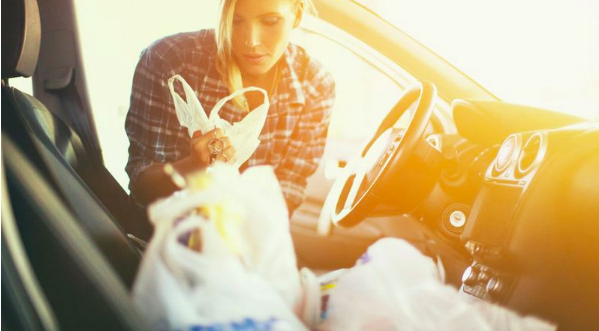|
During a recent heat wave in Texas, local news outlets showed that
you could bake cookies on the dashboard of a hot car parked in the sun. If a sweltering car can do that to raw cookie dough, imagine what it can do your groceries.
The heat not only can quickly spoil your fresh fruit and vegetables but also can speed the growth of germs that contribute to food poisoning, especially in meat and fish.
The Department of Agriculture recommends that meat never be left unrefrigerated for longer than 2 hours—but that gets cut to just an hour when the temperature reaches 90° F. And bacteria continue to thrive until temperatures reach about 140° F, according to the USDA. Cars can heat up fast, too. For instance, if it is 80° F outside, the car temperature can reach 99° F in just 10 minutes and 109° F in 20 minutes, according to the National Weather Service.
Here are some tips to keep your groceries cool, and safe, during hot summer shopping trips.
Summer Grocery Shopping Tips
Plan your errands. For most of the year, it doesn’t matter much in which order you tackle your to-do list. Not so in summer. “Make sure grocery shopping is the last thing you do before heading straight home,” says Suzanne Driessen, a food safety educator at the University of Minnesota.
Park in the shade. Staying out of the direct sun can help keep your car from turning into an oven.
Use insulated bags. You can purchase bags that come with thicker linings to keep cold foods cold. Some have space for cooler packs. And take them into the store with you, so the bags don’t get hot while you are shopping. “Leave them in the car and you’ve defeated the whole purpose,” Driessen says. For extra-hot days or long trips, when you get back to the car you can transfer the groceries into a cooler.
Shop strategically. Make perishables the last items you put in your grocery cart, so they stay cool for as long as possible.
Watch for meat and fish. They pose the the biggest temperature-related food safety risk, says James E. Rogers, Ph.D., director of food safety testing and research at Consumer Reports. “An increase in temperature allows bacteria to multiply, especially the types that cause food poisoning,” Rogers says. Milk and dairy products don’t face the same risk, because they have been pasteurized. Still, “you might end up with spoiled milk,” Rogers says.
Pack smart. That means putting like things together, especially frozen with frozen. Note that while refrigerated items should also be bagged together, meats and fish should be bagged separately from other foods to avoid cross-contamination.
Avoid the trunk. When you get back to your car, don’t put the groceries in the trunk, which tends to be the hottest part of a car. Instead, put groceries in the air-conditionedcabin. And while you may think it’s better to put them on the floor, out of the sun, they’ll stay cooler if air circulates around them. “I always put my bags on the seat,” Driessen says. And don’t pack bags too tightly together or you’ll lose the benefits of the circulating air.
Don’t forget restaurant leftovers. Driessen says she has seen multiple cases of people sickened from leaving doggie bags in their car for too long. So treat them like groceries.
And when you get home, put the leftovers—and your groceries—into the fridge ASAP.
This article originally published on Finance.Yahoo.com by Jesse Hersh
Posted Thursday, August 16 2018 11:00 AM
Tags : Keeping Groceries Safe in a Hot Car
|